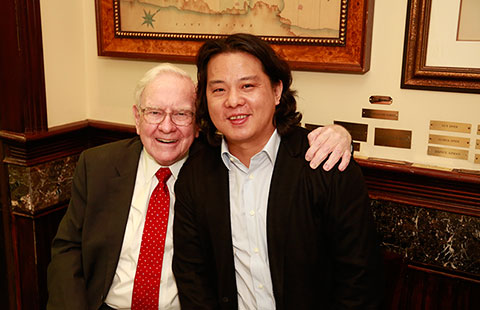A new blueprint for global growth
(chinadaily.com.cn) Updated: 2015-09-11 16:41Mass entrepreneurship and innovation is a strong power driving development. Creativity of the people is the greatest asset for development. China has a labor force of 900 million and over 7 million people graduate from college every year, with more and more of them joining the ranks of entrepreneurship and innovation. This has led to new supply and demand, and could well count as a major factor in keeping growth stable. Mass entrepreneurship and innovation means more employment. Though growth is moderating, more jobs are being created because new market entities keep emerging. Measures to streamline administration, delegate government power and reform the business system have enabled new businesses to get started. For the past one and a half year, over 10,000 new businesses have been registered on a daily basis in China, and the momentum is still growing, creating a lot of jobs in the process. Mass entrepreneurship and innovation gives impetus to developing a sharing economy. The sharing economy that is now thriving on a global scale opens a new way to driving economic growth. Entrepreneurship and innovation through sharing and collaboration lower the threshold and costs and increase the speed of doing business. This opens up space for developing the sharing economy in China and may get a lot of people involved. Mass entrepreneurship and innovation represents an innovative step in the income distribution model. With tens of thousands of people earning more through innovation and starting up businesses, primary distribution gets to play a bigger role. A distinct Chinese model of wealth creation through hard work and mass participation is now taking shape. And this will help put in place a more equitable distribution pattern. Mass entrepreneurship and innovation is effective in promoting social justice. As long as they are willing and capable, all people could establish themselves and lead a promising life through innovation and entrepreneurship. They could all have an equal chance for development and for moving up the social ladder, and could all enjoy a life of purpose and dignity.
Mass entrepreneurship and innovation requires comprehensive and accessible supply of public goods and services. This also requires structural reform. Instead of acting on its own, the government encourages the participation of private capital and foreign investment. By promoting government procurement of social services, PPP, franchising and other market-oriented approaches, we encourage and guide the participation of private investment in the development, operation and management of public goods and services. In addition, we have relaxed market access for foreign investment. As a result, a new model of diverse supply of public goods and services has been forged. Going forward, we will continue to advance such reform, so as to facilitate entrepreneurship and innovation, promote better economic development and improve people's living standards.
Ladies and Gentlemen,
China's reform is a process of continued opening-up and integration into the world. China will open still wider to the rest of the world. There will be no change in China's overall policy on FDI. Specific steps will be taken to attract more foreign investment through greater openness. For example, this year, we further expanded the areas open to foreign investment and cut by half the number of items where restrictions were imposed on foreign investment access. To facilitate foreign investment, we have by and large replaced the past practice of review and approval with the practice of record keeping. We will continue such efforts to make China one of the most appealing destinations for investment.
The recent volatility in the international financial market has affected global economic recovery. It is imperative for countries to step up macro-economic policy coordination, maintain stability of the financial market through concerted efforts and bring the global economy back on track of healthy growth. What has happened since the international financial crisis shows that quantitative easing alone cannot address the structural hindrances to growth, and policies as such may not be without their negative impacts. What is important is to strengthen the real economy. This would require that countries advance structural reform at home and strengthen international cooperation. Along this line, China has come up with the initiatives to build the Silk Road Economic Belt and the 21st Century Maritime Silk Road, and to promote global cooperation on production capacity. We believe these initiatives could help further open up our country and forge a more balanced and inclusive global industrial chain. This in turn could pool the comparative strengths of all countries and foster a global community of common interests and development for win-win, inclusive and common progress.
- A new blueprint for global growth
- Details of US Precision Medicine Initiative to be released
- Sanhe Hopefull to invest $317m in Jiangsu vegetable oil refinery
- Nippon Paint China to expand and promote regional economy
- A million dollar lunch with billionaire Warren Buffett
- FTA to boost Australia's Chinese wine sales
- Sri Lanka aims to boost tourism, eyes more Chinese visitors
- Fuzhou New District already on the radar of foreign investors
















